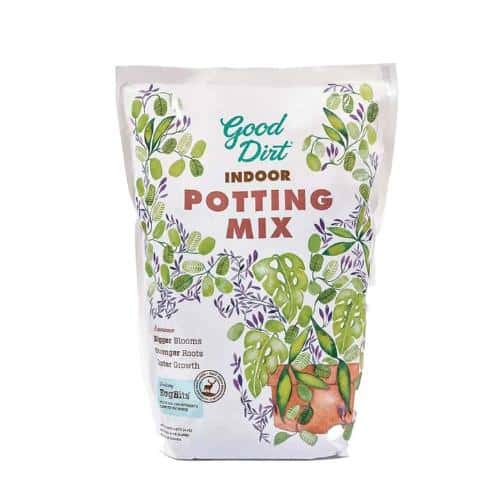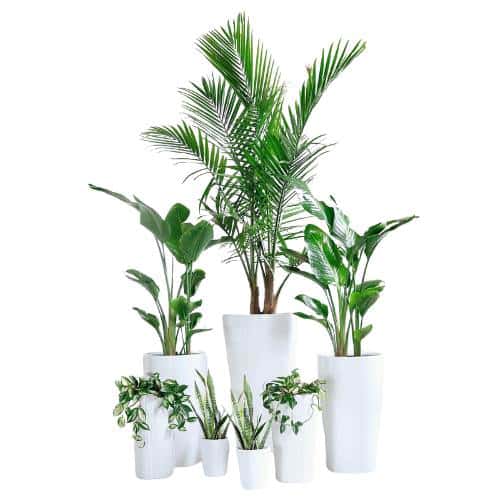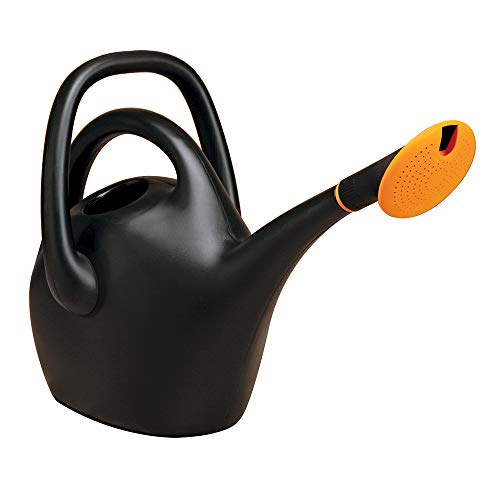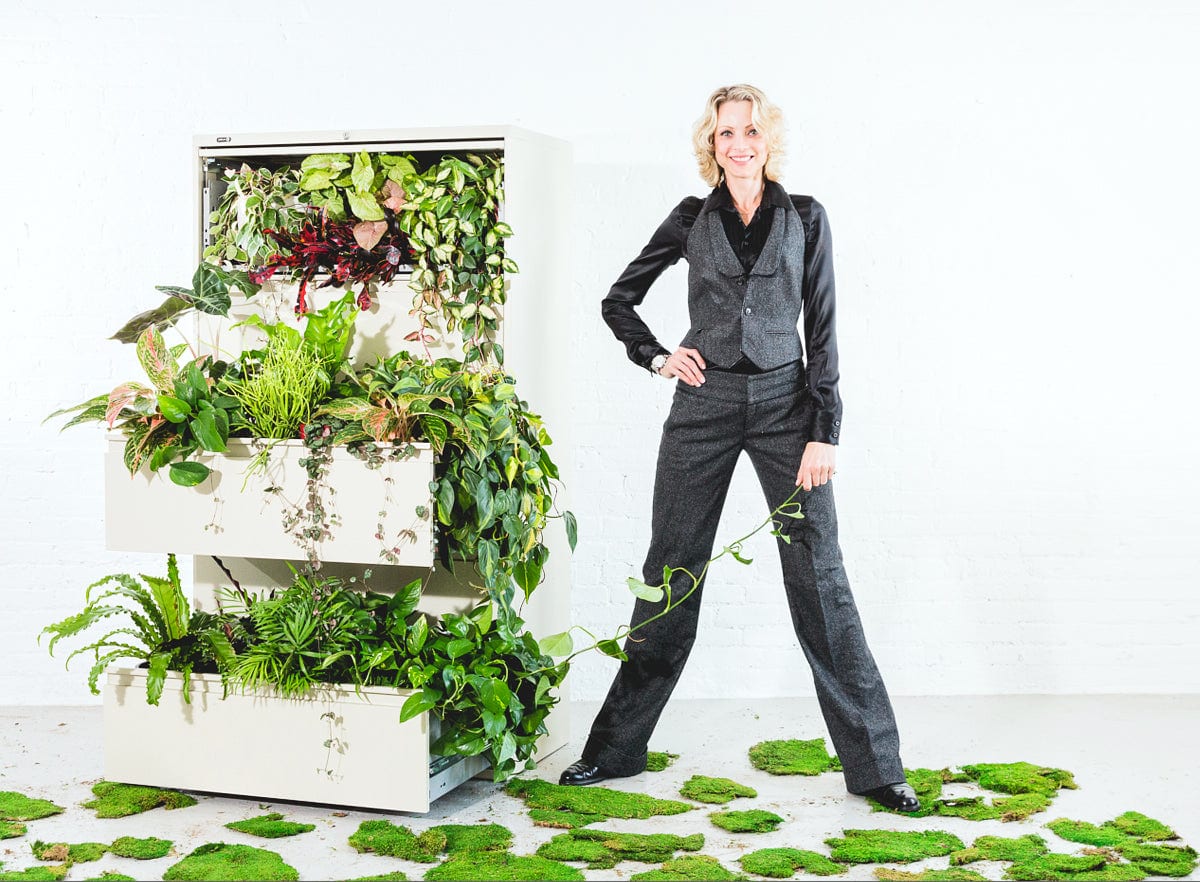
A guide for executives and office managers who need to buy office plants — and have no idea where to start.
If you’re here reading this guide, there’s probably a reason: you need plants for your office.
Great! Who doesn’t love getting new plants?!
The only problem?
You’ve never even bought plants for yourself before. So you’re not exactly sure where to start.
Or even if you have plants at home, you’re here because you already know:
Plants in an office environment are up against a different set of obstacles. So buying plants for an office is pretty different from buying plants for yourself.
Don’t worry.
That’s why we made this guide. We’ve consulted over 1000 offices around New York on which plants are the right choice for their space, so we know exactly what to look out for.
Use this guide to avoid common DIY mistakes we see Office Managers make or schedule a consultation with us here.
Step 1. Make sure you’ve chosen the right spots for your office’s new plants.
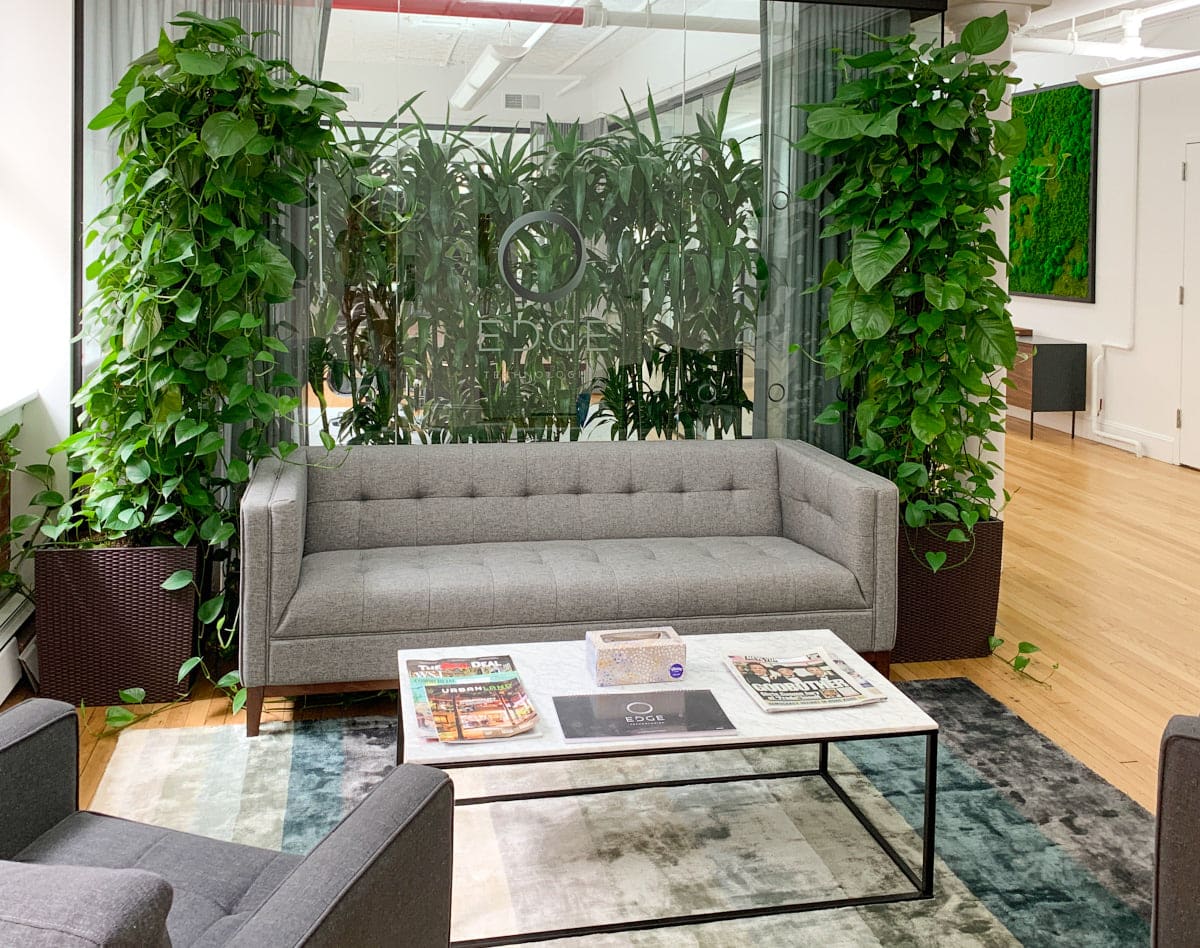
In our work with clients, this is the step where we consistently see the most mistakes.
Since this is the hardest part, this is usually where we focus our time when we do office consultations, but when doing it yourself, there are 4 things to look out for.
And above all, remember this golden rule — choose where you want to put your plants before you choose which plants you want to get.
This is the #1 most common mistake we see. Trying to force a plant that loves light into a dark corner is never going to work. So make sure you’re not doing this backward.
Now, onto the 4 things, you should look for.
1. Ample space.
Just like people, plants need a certain amount of space to really thrive.
Do not try to squeeze plants between or behind other pieces of furniture. This will block their airflow and make it difficult for them to breathe.
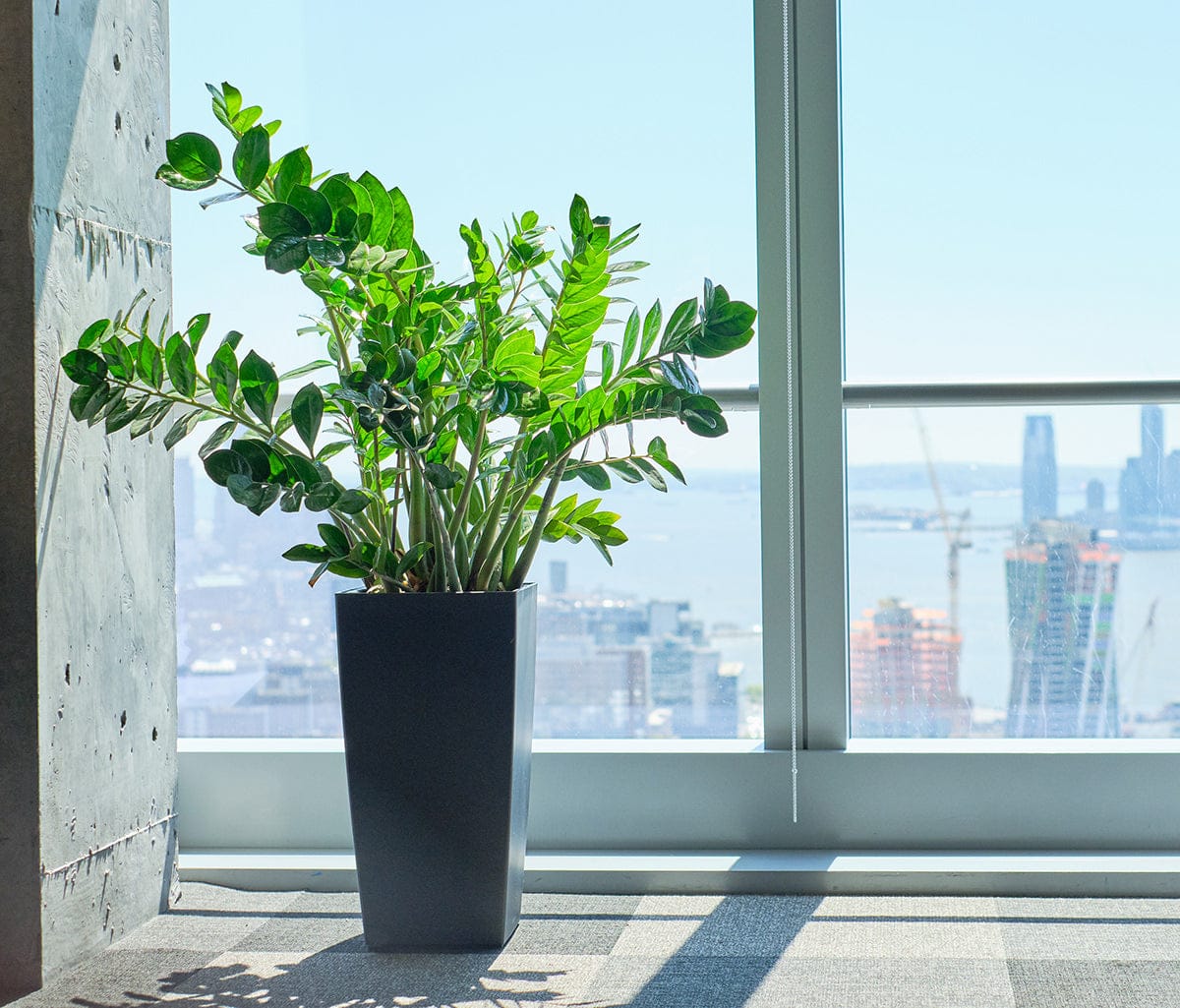
Good airflow is essential for a healthy, long-living plant with strong stems. It also helps your plant maintain better temperature control, replenish CO2, reduce humidity, and resist certain diseases.
With that in mind, follow these guidelines:
- Don’t try to squeeze your plants in a corner or behind furniture. Always make sure your plant has enough room to thrive.
- Keep at least 6” of space in between your plants and any other furniture.
- Place your plants in a spot with good air circulation, such as near hallways, in front of windows, and on top of tables or desks.
- For rooms with no windows and little airflow, choose a hardy plant (like the Iron plant) that can survive in this type of environment.
- It’s also a good idea to bring your plants out to a windowed room once in a while to give them a chance to refresh.
- For rooms with little airflow, like conference rooms, we recommend keeping the door open whenever the room is not in use to allow for better air circulation.
2. Away from foot traffic.
Your office probably has a few high-traffic areas such as entrances, break rooms, and restrooms.
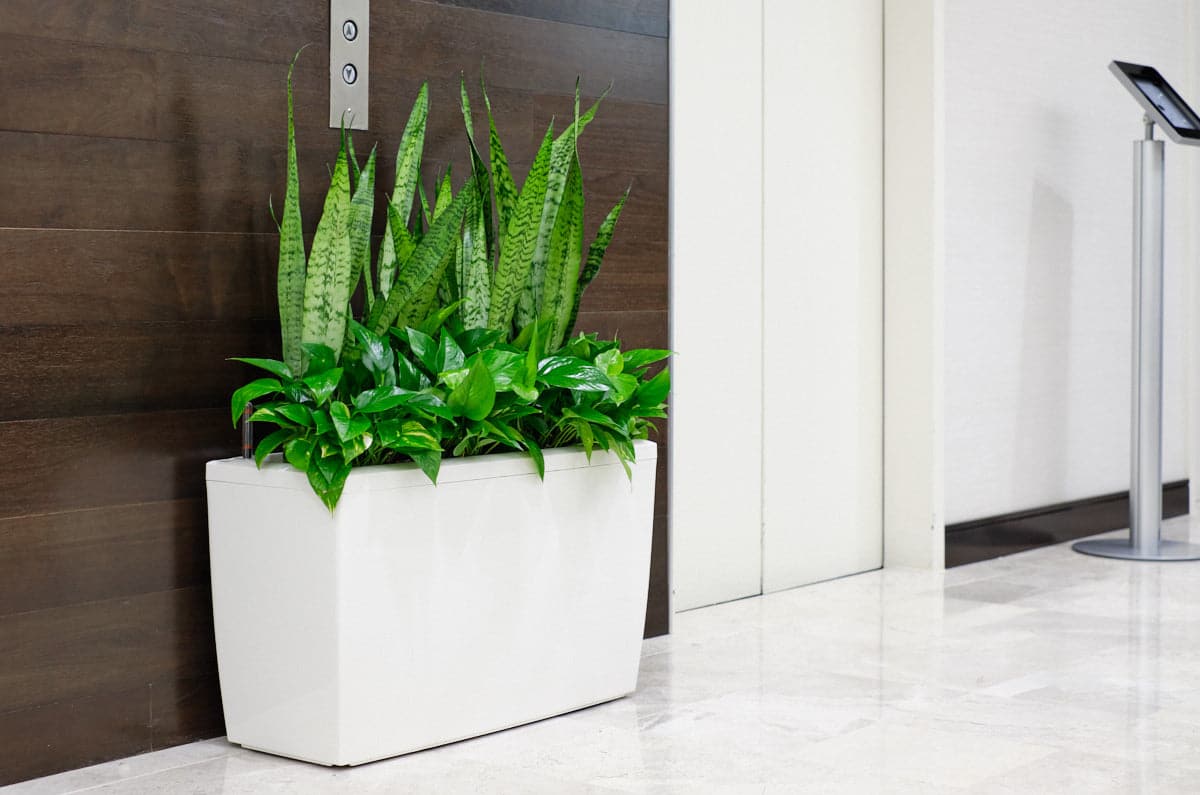
Be very careful about putting plants in these areas. If someone bumps into a planter and knocks it over, that will create a huge mess and probably kill the plant.
If you want to add a plant to a high-traffic room, it’s a good idea to observe the room when it’s busy to see where the traffic flows. Try to keep your plants safely out of the way.
3. Temperature & humidity — including over those long weekends.
This is one of the biggest plant killers we see. Maybe you’ve chosen a spot that works well during business hours, but then what about over the Fourth of July? When the AC is off and all the windows are closed?
To be happy when you’re in the office, plants need to be far away from cooling & heating units that pull moisture from the air.
And over weekends and holidays, plants need to be in a room with air circulation. Not stuck in a stuffy room with no AC or heat to maintain the temperature. Usually, it makes sense to move your plants and open a nearby window on these occasions.
Step 2. Choose the right plants.
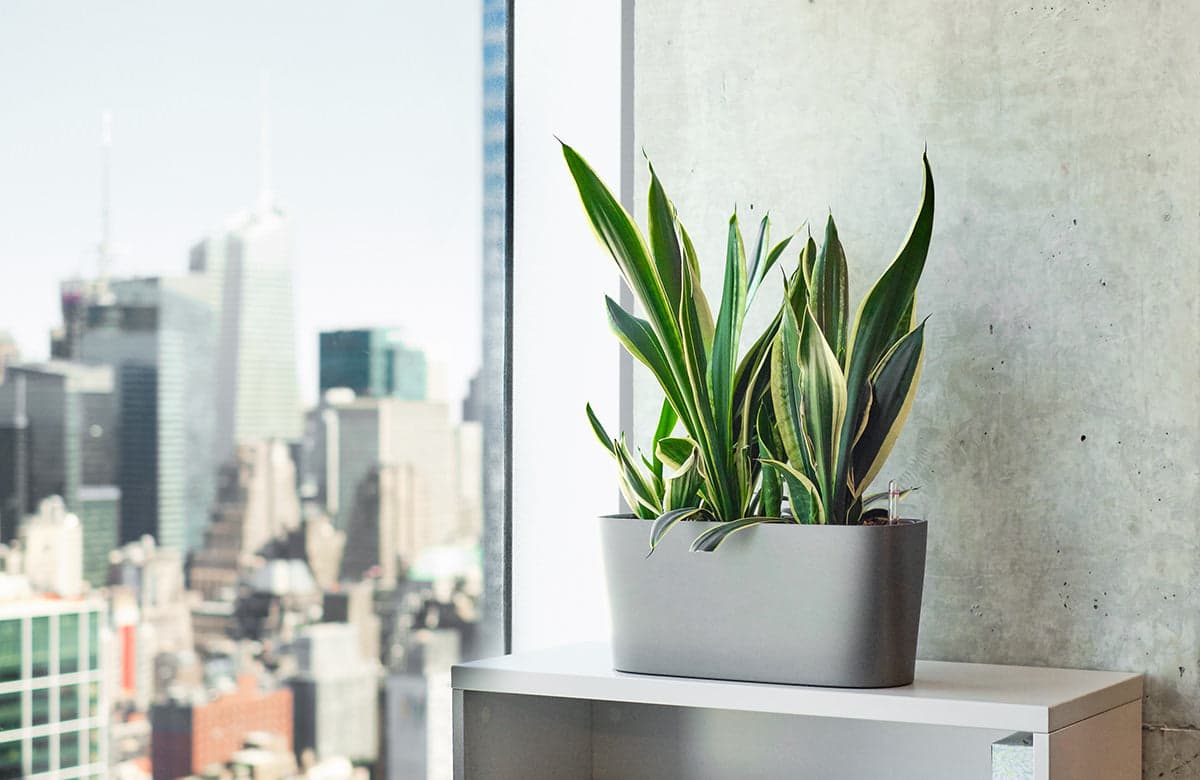
Now that you know where your plants will go, the next step is to choose a plant that will thrive in that exact spot.
What size plants should you buy?
Your first step should be to narrow down your choice based on size. Here are a few things to keep in mind:
- Where will the plant go? Generally, floor plants should be taller while plants that sit on a table, desk, or window should be shorter.
- Remember that plants grow. For this reason, it’s a good idea to buy a plant that is a little smaller than the one you ultimately want.
- What kind of look do you want? Do you want your plant to be at eye-level or lower? Do you want an accent piece or a bold statement? The answers to these questions will have an impact on your plant size.
- Keep in mind the size of things around the plant. A small plant on top of a giant table might look silly, while a large plant might dwarf a tiny table next to it. Try to keep your plant in proportion to the rest of the room.
Here at My City Plants, we categorize our plants into 2 size categories:
Desktop Plants (less than 2.5’ tall)
Small plants are perfect for decorating a windowsill, table, or desk. They’re light and easy to move around so you can find the perfect spot.
Floor Plants (2.5’ to 5’ tall)
These plants work best by seating areas, entrances, or large counter services. They’re the perfect height to place next to a chair or couch. Ideal for filling up large open spaces and high empty corners. These plants make a statement in any room.
What light level does your office have?
It’s important to make sure that the plants you buy are a good fit for the light levels in your office. Otherwise, your plant’s health will suffer if they don’t get enough light.
Read our Plant Light Guide to determine your light level.
Keep in mind that the light level depends on the exact spot where you want to place your plant. (For example, a southwest-facing window will be Bright Light, an east- or west-facing window will be Medium Light, and a north-facing window will be Low Light.)
Once you figure out the light level for the spot where you intend to place your plant, the next step is to choose a plant that will thrive in that exact spot:
Bright-Light Plants
For these plants to thrive, they need strong sunlight most of the day. They are best placed near a south- or southwest-facing window.
Medium-Light Plants
These plants need partial, filtered, or indirect sunlight for at least part of the day. This includes east- and west-facing windows.
Low-Light Plants
Low-light plants are able to survive in areas with minimal light. This makes them a good fit for most office settings with a lot of fluorescent light, including north-facing windows.
Step 3: Caring for your plants
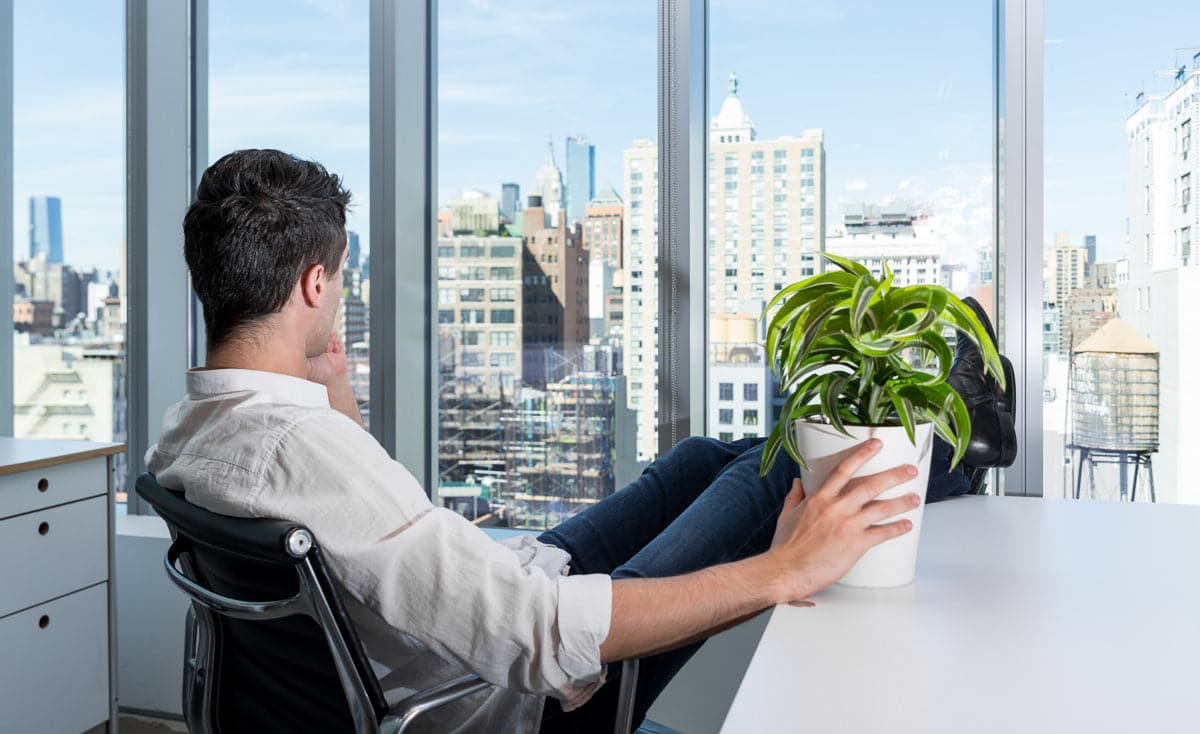
When you buy a plant from My City Plants, we will send you detailed and easy-to-follow plant care instructions that tell you exactly how to care for your new plant.
Here are the steps we recommend taking to maintain your investment in beautiful office plants:
1. Water — the right amount, at the right frequency.
Of course, you need to water your plant. The trick is to not over- or under-water.
It will take time to get a feel for this, but depending on the type of plant you’re watering, there are different levels of soil moisture that are ideal.
Figure out the ideal level of moisture for your kind of plant, and press your thumb or forefinger into your plant’s soil to check the moisture and make sure it’s at the right level. (Another option is buying something like our soil moisture meter, which takes care of this for you.)
Getting good at this will help you make sure you’re watering your plants the right amount.
2. Wiping down your plant’s leaves.
This is a step most busy office workers miss, and it makes a huge difference.
Plants don’t do well with dust, so every leaf should be wiped down with a moist paper towel from stem to tip. Do this for every plant in your office, every 2 weeks.
3. Trimming.
It’s important to regularly cut off dead leaves and trim back overgrown stems. This will help your plant to grow to its fullest potential.
4. Fertilizing.
Everyone knows they need to water their plants, but many people overlook the importance of fertilizer.
Plants will extract nutrients from the soil, and over time that soil will become depleted.
Using fertilizer helps keep your soil nutrient-rich so your plants stay happy and healthy.
For specific fertilizer instructions, follow the care instructions for your specific plant.
5. Weekends and holidays.
As we mentioned earlier, holidays and weekends when lights, AC & heat are off can be perilous for your plants.
You may want to move your plants to a room with better air circulation during these periods and consider opening windows if the outside temperature is above 60F and if your building allows. If it doesn’t, then take your plants to a larger room with more air circulation and light.
There you go. Those are the 4 steps of plant care to keep in mind when looking after your office’s plants.
And that’s the whole process — from choosing where to put plants in your office all the way through to keeping them happy for years. That’s everything you need to keep your plants happy.
If you need more help with the placement and choice of plants for your office, request our office plant consultation where we evaluate your space’s unique needs by email or video call and make recommendations based on our experience.




